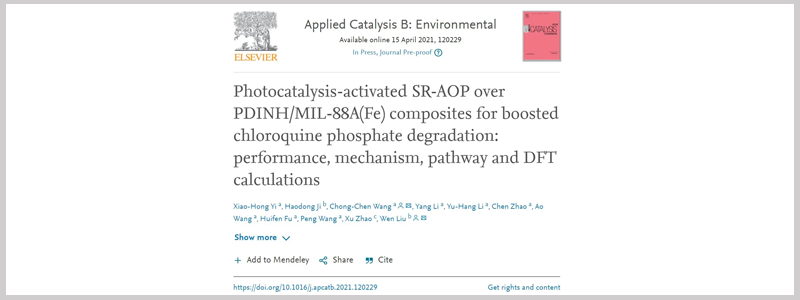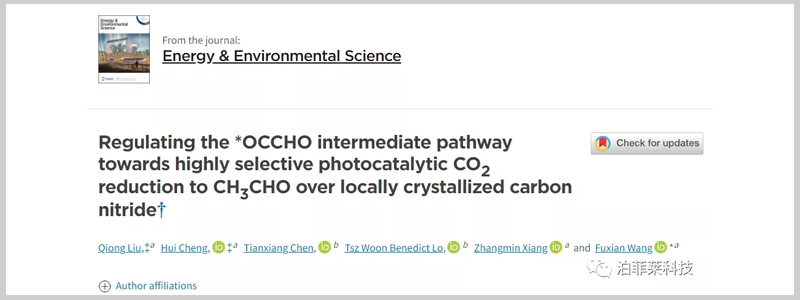Modern laboratories face increasing pressure to improve operational efficiency, and there is an urgent need for efficient and reliable parallel photochemical reaction equipment.
Perfectlight Technology introduces the PCX-50C Discover multi-channel photocatalytic reaction system, which provides parallel reactions in multiple channels for various processes in the study of photochemical synthesis methodology, including catalyst and reaction condition screening, substrate expansion, ensuring parallel and reliable results while enhancing reaction efficiency.
▲ Photochemical synthesis catalyst screening
▲ Photochemical synthesis reaction condition screening
▲ Photochemical synthesis excitation wavelength screening
▲ Photochemical synthesis substrate expansion
▲ Photochemical synthesis reaction kinetics study
▲ Photochemical synthesis reaction mechanism study
● Customized LED light source, excite "exclusive" photochemical reactions
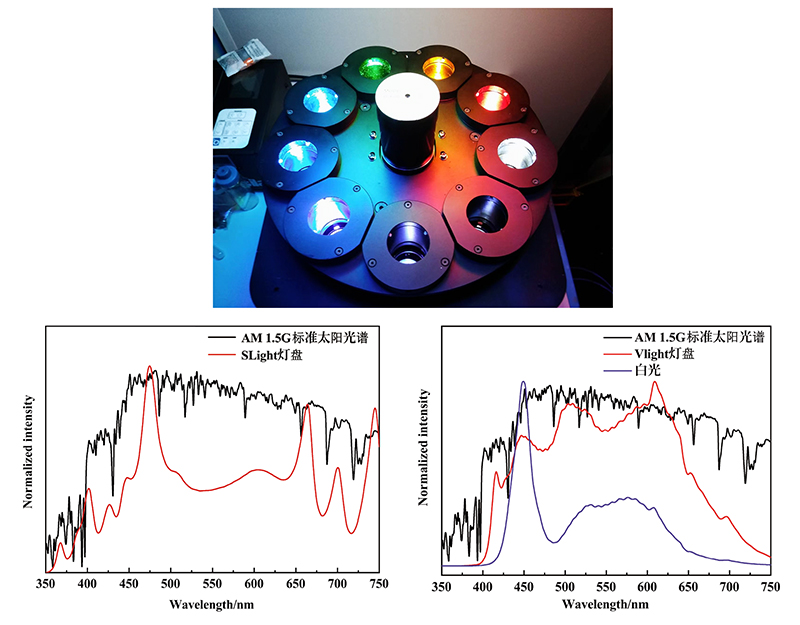
The PCX-50C Discover multi-channel photocatalytic reaction system utilizes 9 LED light sources, covering wavelengths from ultraviolet to infrared regions. The light source wavelength is customizable to meet the requirements of different photochemical synthesis reactions.
LED light source power is adjustable in the range of 100 to 450 mW/cm2, making it ideal for slow-reacting photochemical synthesis experiments at low light power.
LED light source selectable wavelengths:
① Ultraviolet region—— can be used for substrate-initiated free radical chain reactions
② Visible light region—— enables visible light excitation of catalyst-initiated free radical reactions while reducing side reactions caused by substrate excitation, enhancing reaction selectivity
l=365, 385, 405, 410, 420, 435, 445, 450, 460, 475, 485, 505, 520, 525, 535, 550, 575, 590, 595, 620, 625, 630, 655, 685, 700, 730, 760, 770 nm
③ Vlight lamp panel—— suitable for simulating reactions under sunlight conditions
380≤l≤780 nm
For the most common blue and green light absorption regions of photocatalysts, ten absorption wavelengths are available: 450 nm, 460 nm, 475 nm, 485 nm, 505 nm, 520 nm, 525 nm, 535 nm, 550 nm, 575 nm. These wavelengths can be combined and precisely controlled to obtain the best light wavelength. Each light-emitting body is equipped with optical lenses and individually selected to lock the focal plane, ensuring uniformity and utilization of light source output.
● Precise temperature control with water cooling, adjustable reaction rate
The PCX-50C Discover multi-channel photocatalytic reaction system uses an integrated condensate quick-connect interface, which can be used in conjunction with a low-temperature circulating water machine to adjust the reaction rate by controlling the reaction temperature.
For photochemical synthesis reactions with slow rates at room temperature, the reaction temperature can be increased to 80°C.
For reactions with high free radical activity and multiple side reactions, precise control at -10°C can reduce free radical activity, reduce side reactions, and increase the yield of the main product. Especially in temperature-sensitive asymmetric catalytic reactions, low-temperature photosynthesis reactions can effectively reduce chiral inversion of products and improve product enantioselectivity.
The PCX-50C Discover multi-channel photocatalytic reaction system has a condensate collection device, effectively avoiding the impact of condensate on the reaction equipment.
● Flexible reaction vial configuration for easy control of reaction conditions
The PCX-50C Discover multi-channel photocatalytic reaction system can be paired with 1, 1.5, 5, 10, 50 mL volume reaction vials to meet the requirements of different photochemical synthesis reactions.
Reaction vials in the PCX-50C Discover multi-channel photocatalytic reaction system use a bottom irradiation mode, where the light path is vertically irradiated from the bottom of the reaction vial to the entire reaction system, effectively avoiding inconsistent light flux caused by side surface incidence. Reflective film high-efficiency vials can be selected to reflect scattered light and refracted light back into the reaction vial, improving light utilization efficiency, and thus increasing the reaction rate and shortening the reaction time.
If a closed reaction system is needed, high-sealing performance vial caps and PLS-MAC1005 multi-gas atmosphere controller can be used together to achieve feeding and sampling during the reaction under controlled atmospheres, suitable for anaerobic reactions and reactions involving gases. The reaction vial can withstand positive and negative pressures.
Different types of reaction vial caps can be used to achieve photochemical reactions in different environments, such as vacuum, inert gas protection, and a flowing atmosphere, allowing the detection of gas and liquid samples.
● Stable and reliable parallel system to boost experimental progress
The PCX-50C Discover multi-channel photocatalytic reaction system includes 9 parallel reaction positions, using a microchip-mechanical linkage control mode to ensure the consistency and accuracy of experimental reaction condition parameters, such as light source, stirring rate, and temperature adjustment. This guarantees precise experimental data and significantly enhances experimental efficiency while maintaining repeatability.
The irradiation unit of the PCX-50C Discover multi-channel photocatalytic reaction system uses a cyclic motion mode, effectively avoiding non-uniform illumination of the reaction system due to inconsistent light output from various light-emitting bodies.
● Rich expansion to free your hands
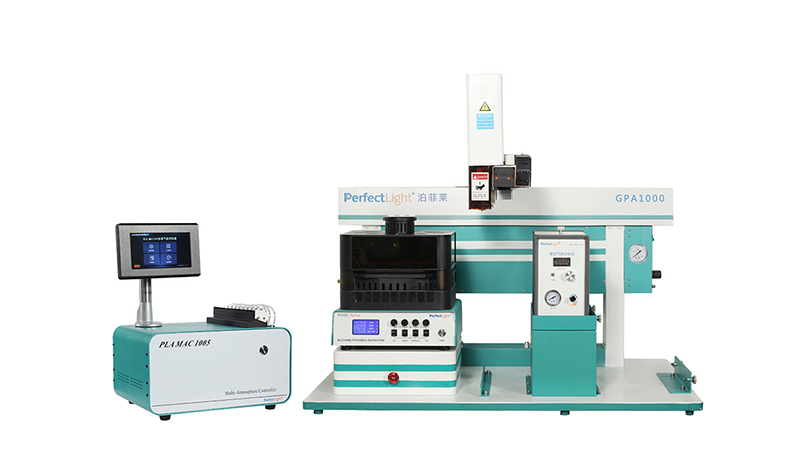
Paired with a PLA-MAC1005 multi-gas atmosphere controller, you can achieve anaerobic reactions and reactions with gases such as carbon dioxide, oxygen, and chlorine as reactants. The PLA-MAC1005 multi-gas atmosphere controller can precisely control gas partial pressures, adjust internal pressure of the reaction system, for research in reaction kinetics and changing gas partial pressures.
When combined with the GPA1000 autosampler, it forms the MCP-WS1000 Photochemical Workstation. Paired with a gas chromatograph, it enables fully automated sampling and injection of gases and liquids in the reaction system. It provides real-time monitoring of substrate and product concentrations during the photosynthesis reaction, allowing real-time adjustment and optimization of reaction conditions, accurate determination of reaction duration, and labor-saving.
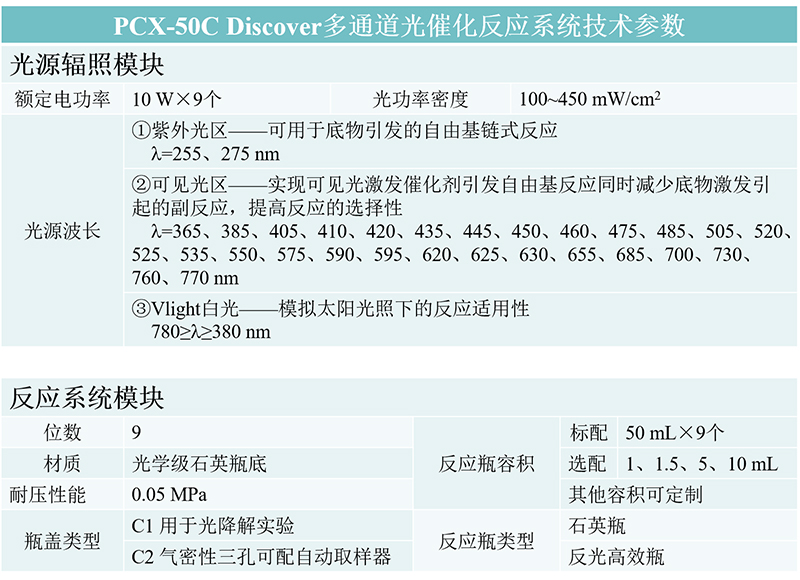
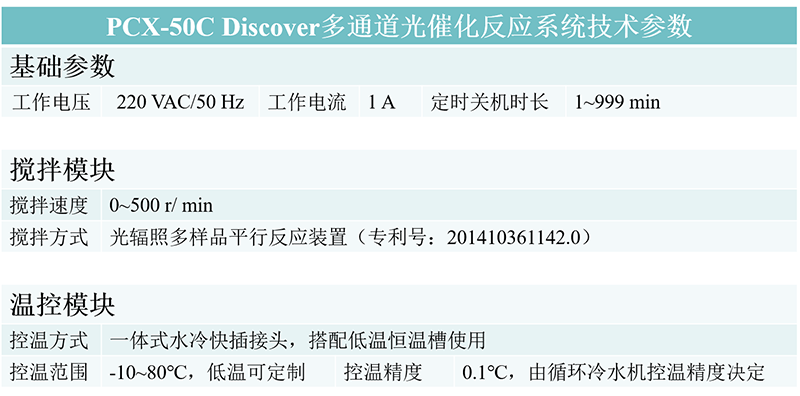
Attachment: Common photocatalyst absorption wavelengths and redox half-potentials of excited states
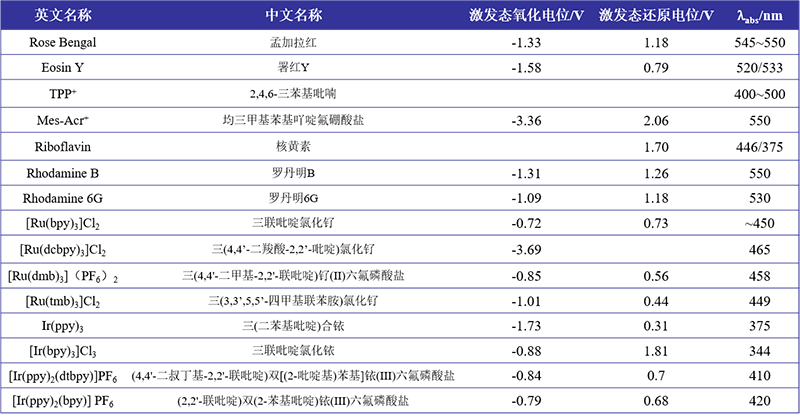
Representative Literature

